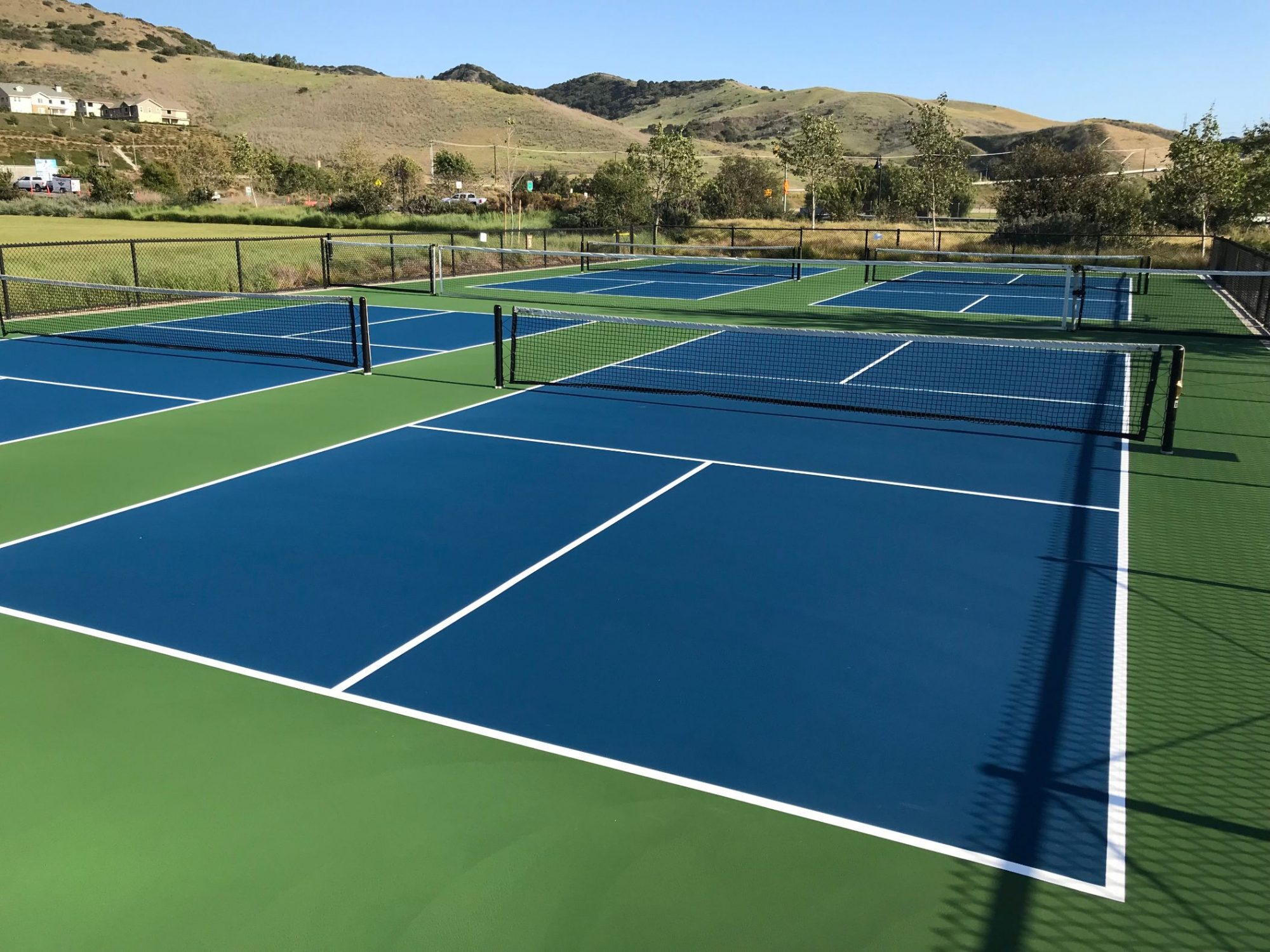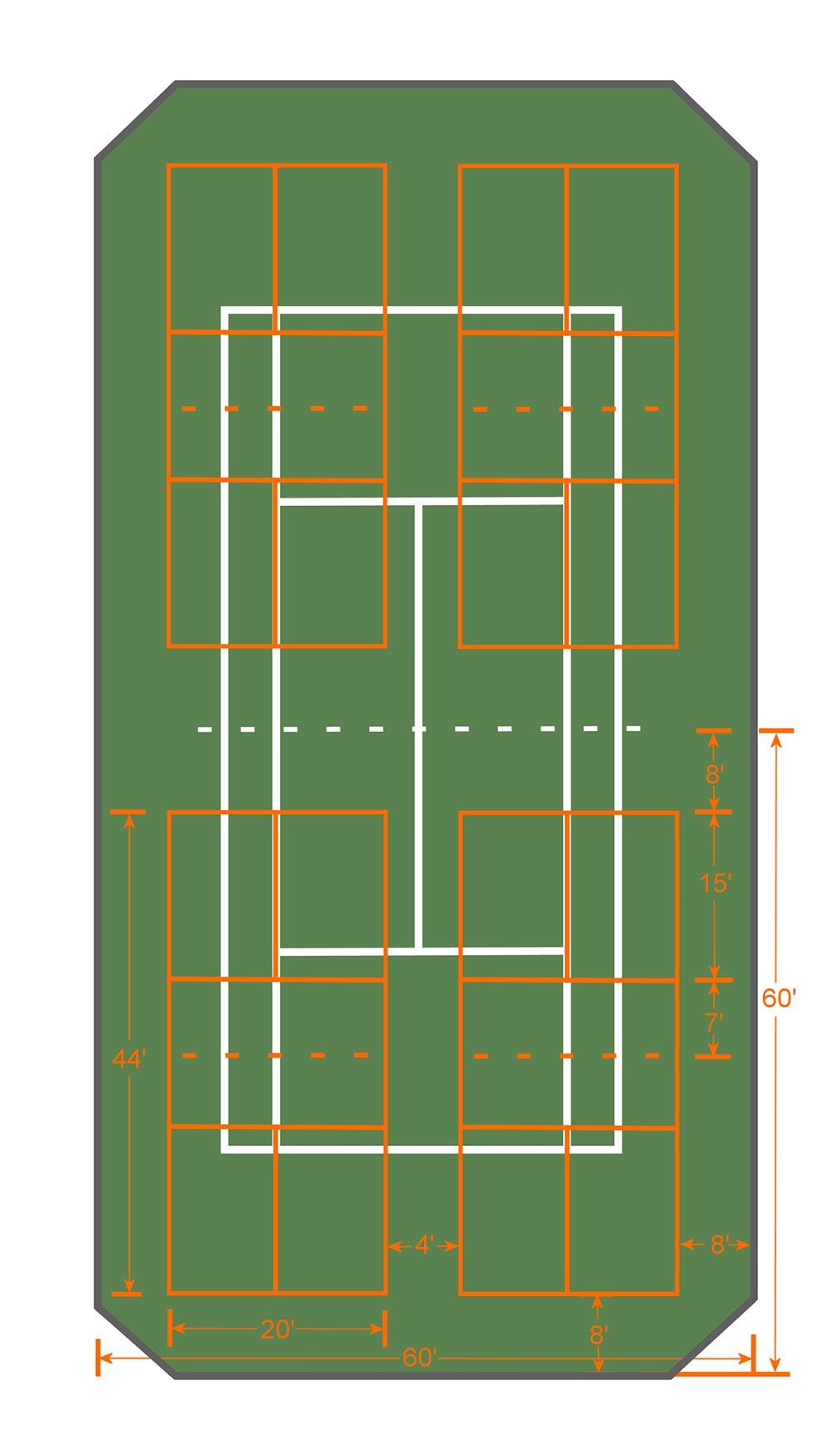Transform Your Room with Quality Pickleball Judiciaries Design & Building in Illinois and Midwest
Transform Your Room with Quality Pickleball Judiciaries Design & Building in Illinois and Midwest
Blog Article
Key Variables in the Construction of Pickleball Courts: From Site Choice to Final Finishes
The building of pickleball courts includes a series of critical factors, beginning with the option of an ideal site that balances access with ecological considerations. Necessary components such as court measurements, surface products, and water drainage systems significantly impact not only the quality of play however also the durability of the facility. In addition, focus to illumination and ending up touches can raise the general experience for gamers and viewers alike. Comprehending how each of these elements interrelates may disclose understandings that are frequently forgotten, prompting a closer evaluation of finest techniques in court building and construction.
Website Choice Requirements
When beginning on the building of pickleball courts, it is important to pin down the site selection criteria that will certainly make certain optimum playability and access. The area needs to be quickly reachable for gamers, ideally located near houses or recreation center, to motivate involvement.
Furthermore, the surface needs to be level and stable, as irregular ground can bring about security risks and affect gameplay. Ample drain is also crucial; picking a website with good water drainage will certainly help keep court conditions throughout negative weather condition.
Another essential consideration is the availability of energies. Access to power and water is needed for lighting and upkeep purposes. In addition, proximity to parking centers is vital, facilitating simple access for gamers and spectators alike.
Ecological factors can not be ignored; all-natural color from trees can boost player convenience, while direct exposure to prevailing winds might disrupt play. Finally, zoning regulations and neighborhood assistance ought to be taken into consideration to ensure that the job straightens with local standards and obtains the backing it needs for effective implementation. By carefully examining these standards, stakeholders can develop an inviting and functional atmosphere for pickleball lovers.
Court Capacities and Format
To ensure optimal gameplay and adherence to policies, the measurements and design of pickleball courts have to be carefully defined. A conventional pickleball court determines 20 feet in size and 44 feet in length for both songs and doubles play. The recommended layout consists of a non-volley zone, frequently described as the "cooking area," extending 7 feet from the net on either side. This area is essential, as it influences player positioning and shot selection - Illinois and midwest.
The net height is set at 36 inches at the sidelines and 34 inches at the facility, developing a minor dip that impacts sphere trajectory. Court markings are equally important; lines should be 2 inches vast and distinctive in shade to guarantee visibility.
Additionally, a barrier zone surrounding the court is suggested, usually extending 5 to 10 feet past the sidelines and standards to fit players' activities and improve safety. Correct format and dimensions not just make sure compliance with official laws however also boost the general having fun experience, fitting both recreational and competitive play. Mindful planning in these locations is vital to the successful building and construction of pickleball courts.
Surface Product Options
Choosing the right surface area material for pickleball courts is critical for guaranteeing optimum player efficiency and security. The selection of surface can significantly influence gameplay, including sphere bounce, traction, and player convenience.
There are several alternatives available, each with its distinctive characteristics. Asphalt is a preferred choice because of its durability and reduced upkeep requirements. It supplies a strong playing surface area that can withstand different climate conditions why not try this out however might call for periodic resurfacing.
Concrete is one more extensively used material, supplying outstanding durability and a smooth coating. It permits constant sphere bounce yet can be hard on players' joints, making it much less preferable for lasting play without proper cushioning.
For those seeking improved convenience and shock absorption, supported acrylic surfaces present a practical option. These surface areas incorporate a base layer with an acrylic topcoat, offering enhanced grip and a softer feeling, which is valuable for reducing the risk of injuries.
Lastly, synthetic grass is getting grip, specifically for multi-purpose centers. Its convenience and reduced upkeep requires make it an attractive option, though it might not provide the very same sphere feedback as traditional hard courts. Careful consideration of these options will ensure an optimum having fun setting.
Water Drainage and Lights Factors To Consider
Appropriate drain and efficient lighting are vital components in the construction of pickleball courts, considerably influencing both playability and safety and security. Ample water drainage systems stop water build-up, which can result in slippery surface areas and damages to the court structure. A properly designed water drainage plan incorporates sloped surface areas and ideal materials to help with water flow far from the playing location - Illinois and midwest. This not only protects the honesty of the court however also decreases downtime because of poor weather problems.
Illumination is just as critical, particularly you can try here for courts meant for evening usage. The positioning of lighting fixtures need to be strategically prepared to remove shadows and offer even distribution of light throughout the court.

Final Surfaces and Upkeep
After dealing with drain and lights considerations, interest turns to the final coatings and recurring upkeep of pickleball courts. Illinois and midwest. The selection of surface area product is crucial, as it impacts both playability and toughness. Usual alternatives consist of acrylic layers and specialized sporting activities surface areas click to read more that give ideal traction and cushioning. These surfaces ought to be used in numerous layers to make sure durability against climate components and use.

Seasonal upkeep could include resurfacing every few years, relying on usage and environmental variables. Properly preserving webs, court lines, and bordering areas is similarly vital to provide a risk-free and delightful having fun experience. By buying high quality surfaces and sticking to an organized maintenance routine, center proprietors can guarantee their pickleball courts remain in outstanding condition for several years ahead.
Conclusion
In final thought, the successful construction of pickleball courts pivots on careful interest to several vital aspects. Quality coatings and a durable maintenance timetable are necessary for preserving the court's problem, improving the overall experience for gamers and spectators alike.
Report this page